October 5th, 2018
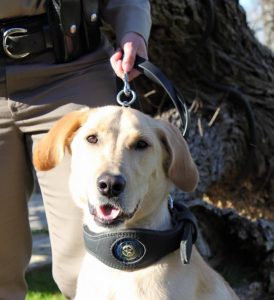
K-9 Game Warden Ruger ready to protect and serve.
This is Passport to Texas
Texas Game Warden, Christy Vales says her partner has a knack for sniffing out illegal items. Of course he does. After all, her partner is a K-9 police dog named Ruger.
He is a certified Peace Officer, you know he’s been commissioned. His badge number is K-9-5. All of our dogs are very high drive, they need a job. The job that we give them is to use their nose. You know it’s just a win-win for everybody.
Catch Officer Vales and Ruger in action the week of October 7 on the Texas Parks and Wildlife TV series on PBS.
So I got a call this morning from Sonny, the Game Warden out of Bastrop County, and he entered a property to check a group of dove hunters. Sonny felt maybe there is, there was a chance that they hid a shotgun, so, I was going to assist with Ruger to do an article search. [Christy] How’s it going Sonny? [Game Warden Sonny Alaniz] We’ve got a 13-year-old that just came out right now. He claimed that he wasn’t hunting. [Christy] How y’all doing? State Game Warden Christy Vales. So are you doing any hunting today? [Hunter] Uh, no ma’am. [Christy] Do you have a hunting license? [Hunter] No I do not. [Christy] Okay. So I’m going to get my K-9 partner out Ruger just to clear the area. What we’re going to do is if you can just go back there and just stay with Officer Alaniz and then I’m going to get my K-9 out, okay? (dog barks).
See Officers Vales and Ruger in action the week of October 7 on the Texas Parks and Wildlife TV series on PBS….and find out of the young man was telling the truth.
Our show receives support from RAM Trucks: Built to Serve.
For Texas Parks and Wildlife…I’m Cecilia Nasti.
Posted in Game Wardens, Hunting, Regulations, TPWD TV | Comments Off on TPW TV — K9 Game Wardens
October 4th, 2018
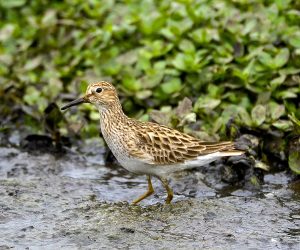
Yellow-legged Sandpiper observed at Hornsby Bend.
This is Passport to Texas
On the second Saturday of every month, Eric Carpenter surveys birds with Travis Audubon, at Hornsby Bend, east of downtown Austin.
Hornsby is one of the better spots to bird in Central Texas.
Carpenter and cohorts have recorded more than 360 species of birds at the site over the years. Dr. Kevin Andersen runs the Center for Environmental Research at Hornsby; an unlikely place for the genteel activity of bird watching.
Hornsby Bend is the facility that recycles all of Austin’s sewage solids, which is a euphemism for poop.
Austin’s sewage and yard waste is recycled at this unique, 1200 acre site along 3.5 miles of the Colorado River.
There’s a farm and a bottomland forest, treatment ponds that are famous for birding. Many different things that we can use for environmental research.
Pathogens in the sludge are killed off naturally. Some solids, when mixed with recycled yard waste, become compost; the cleaned water goes into ponds, creating an environment attractive to wildlife and those who watch it — like photographer Greg Lasley.
Even though we’re right near the city of Austin, there’s an amazing variety of wildlife: butterflies, dragonflies, birds, reptiles and amphibians. My philosophy is if you just get out in nature and spend time looking, things show themselves to you.
That’s our show …for Texas Parks and Wildlife, I’m Cecilia Nasti.
Posted in Birding, Habitat | Comments Off on Wasteland to Birding Wonderland
October 3rd, 2018
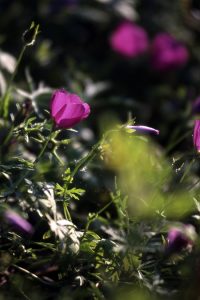
Wildscapes are beautiful and beneficial.
This is Passport to Texas
Whether you have an apartment balcony or large backyard, you can take simple steps to help improve habitat for wildlife. It’s called “wildscaping.” Texas Parks and Wildlife provides online resources to help Texans begin landscaping their property for wildlife. And, really, you can start small. As small as a pot of native flowering plants.
The information can guide you with things like creating a humming-bird or butterfly garden; you can also find recommended plant lists for your part of the state.
Even a small patch of butterfly attracting flowers is a great way to start. Speaking from experience… there is nothing more magical than rolling up your driveway after work to see your garden alive with butterflies. Makes me smile every single time.
Essentially, what you’ll want to do is to provide food, water and shelter for the critters that come calling. And the more of this wildscape habitat that you provide, the more wildlife you’ll attract.
One of Texas Parks and Wildlife’s urban biologists, Kelly Simon, wrote an informative book on the subject, aptly titled: Texas Wildscapes: Gardening for Wildlife.
Also check out the calendar section of the Texas Parks and Wildlife website for classes, tours and demonstrations featuring wildscapes.
For Texas Parks and Wildlife…I’m Cecilia Nasti.
Posted in Botany, Habitat, Invertebrates, Pollinators, Texas Master Naturalist, Wildlife, Wildscaping | Comments Off on Landscaping for Wildlife
October 2nd, 2018
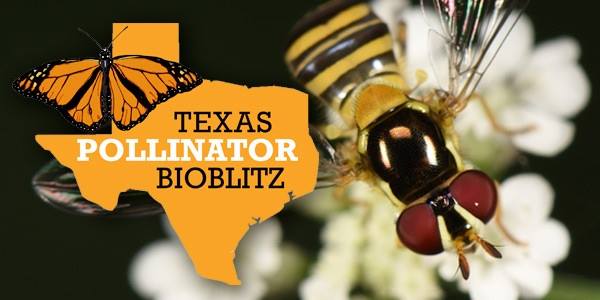
#TXPollinators
This is Passport to Texas
Love bugs? Then participate in the Pollinator BioBlitz, October 5 – 21.
[We have] two goals in mind: to increase awareness about pollinators, and about the habitat that they require.
Johnnie Smith is with Texas Parks and Wildlife. Pollinators include bees, butterflies, beetles, moths and other critters that move pollen while foraging.
If you participate in the pollinator bio-blitz, you’re going to have an opportunity to observe pollinators at a site that you visit, like your local zoo or aquarium or nature center. And observe the pollinators that are there. Grab a picture of the pollinators you find, and you can post them onto Instagram. We’re asking all of the participants to use the hashtag #TXpollinators.
Post findings, on iNaturalist.org. Texas Parks and Wildlife’s website, has pages dedicated to the Pollinator Bioblitz.
Where people can learn what pollinators might be in their area. Links to what might be blooming in your area right now—that’s hosted out of the Wildflower center—and then also, to be aware of habitat you have that supports pollinators. And if you don’t have habitat in or near your home, school library… We’re encouraging people to try and get organized in planting pollinator habitat.
The Pollinator BioBlitz is October 5 through 21.
The Wildlife restoration Program supports our series.
For Texas Parks and Wildlife…I’m Cecilia Nasti.
Posted in #TXpollinators, Pollinator BioBlitz, Pollinators, Wildlife and Sport Fish Restoration Program | Comments Off on Sharing is Caring Concerning Pollinators
October 1st, 2018
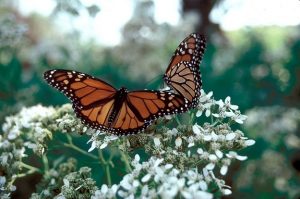
Monarchs enjoying a respite before moving on.
This is Passport to Texas
Habitat loss along its migration route may be one reason the Monarch butterfly is in decline. While feeding on nectar, Monarchs pollinate wildflowers along their route, which benefits our ecosystem.
There are two primary ways that habitat supports pollinators.
Johnnie Smith is with Texas Parks and Wildlife.
And one [way] is, the adult pollinators oftentimes feed on nectar of flowers. So, flowering plants that are a food source for the pollinator is very important. But also, is the food source that the pollinator’s larvae rely on as they’re growing up and becoming an adult. And so, that is just as important as the flowering plants that support the adults.
For Monarchs, native milkweed is an important plant. By cultivating them in our yards, along with other nectar and larval plants, we can all play a part in their survival.
There is no effort that is too small to be counted worthy. And there’s no spot of land that is too small to contain pollinator habitat. So, we really want to empower everybody—tht they can make a difference. Right where you stand. Right where you live—you can crate pollinator habitat, and help turn around this negative trend with the monarchs.
Tomorrow: the Pollinator Bioblitz, an event to build awareness to help all pollinators.
The Wildlife Restoration Program supports our series.
For Texas Parks and Wildlife…I’m Cecilia Nasti.
Posted in Conservation, Habitat, Monarchs, Pollinators, Wildlife and Sport Fish Restoration Program | Comments Off on Help an Icon with Habitat







 Passport to Texas is a
Passport to Texas is a  Passport to Texas is made available by:
Passport to Texas is made available by: